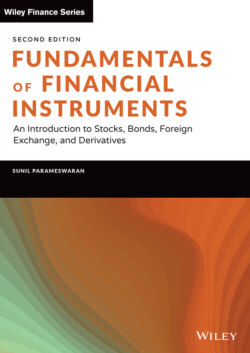Читать книгу Fundamentals of Financial Instruments - Sunil K. Parameswaran - Страница 48
На сайте Литреса книга снята с продажи.
MUTUAL FUNDS
ОглавлениеA mutual fund is a financial intermediary in the indirect financial market. It is a collection of stocks, bonds, and other assets that are purchased by pooling the investments made by a large group of investors. The assets of the fund are managed by a professional investment company.
When investors make an investment in a mutual fund, their money is pooled with that of other investors who have chosen to invest in the fund. The pooled sum is used to build an investment portfolio if the fund is just commencing its operations, or to expand its portfolio if it is already in business. The investors receive shares of the fund in proportion to the amount of money they have invested. When a fund is offering shares for the first time, known as an Initial Public Offering or IPO, the shares will be issued at par. Subsequent issues of shares will be made at a price that is based on what is known as the Net Asset Value (NAV) of the fund. The Net Asset Value of a fund at any point in time is equal to the total value of all securities in its portfolio less any outstanding liabilities, divided by the total number of shares issued by the fund.
There are two broad categories of mutual funds, open-ended and closed-ended. Open-ended funds permit investors to acquire and redeem shares at any point in time, at the prevailing NAV. Thus, the capital of these funds is variable. Closed-ended funds make a one-time issue of shares to investors; however, such funds are usually listed on a stock exchange, which ensures that investors have the freedom to trade. Shares of such funds may be priced above or below the prevailing NAV.
The NAV will fluctuate from day to day as the value of the securities held by the fund changes. On a given day, from the perspective of shareholders, the NAV may be higher or lower than the price they paid per share at the time of acquisition. Thus, just like the shareholders of a corporation, mutual fund owners partake in the profits and losses as well as in the income and expenses of the fund.
One of the advantages of a direct market transaction is that the borrower and lender can save on the margin that would otherwise go to the intermediary to the transaction. After all, how does a depository institution like a bank make profits? Obviously, the rate of interest it pays to its depositors will be lower than the interest rate it charges borrowers who avail of loans. This profit margin is called the Net Interest Margin. So, if the borrowing firms could directly interact with parties who would otherwise deposit their funds with a bank, then they could profitably share the spread, which would otherwise constitute income for the bank. We will illustrate this with the help of an example.
